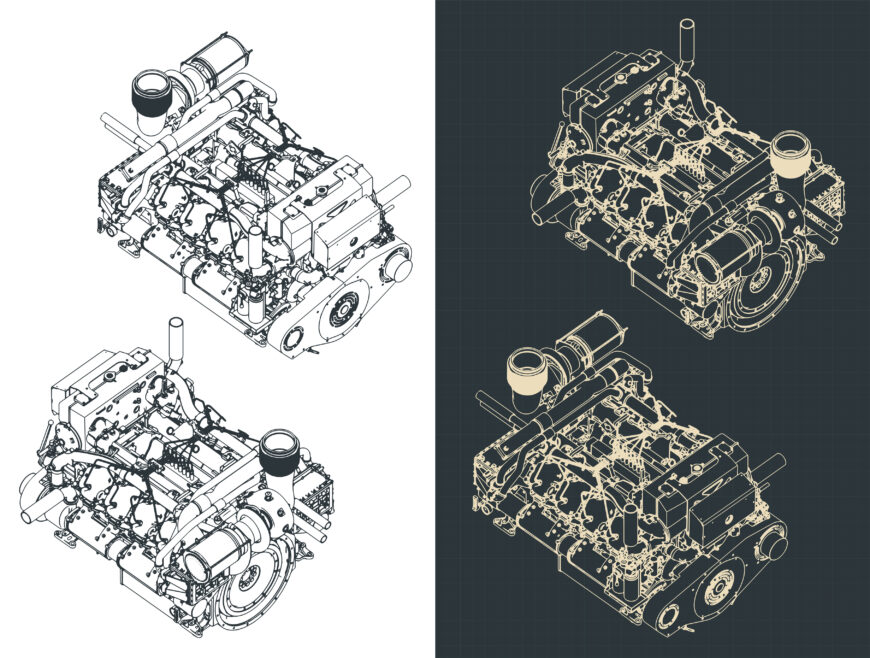The Mission for Ultimate Driving Power: Investigating the Peak of Engine Performance and Technological Breakthroughs in the Automotive Industry
In the world of automotive design, the quest of maximum driving power has been an unrelenting pursuit that has unravelled with the development of engine style and the integration of innovative modern technologies. From the meticulous workmanship of combustion engines to the quick advancements in electric propulsion systems, the automobile market stands at the cusp of a new age identified by extraordinary performance capacities.
Advancement of Engine Style

Furthermore, the assimilation of turbocharging and supercharging innovations has transformed engine design by increasing power without considerably raising engine size. These forced induction systems compress the consumption air, enabling for even more gas to be combusted, thereby creating higher power result from a smaller engine. This development has been especially crucial in boosting the performance of smaller variation engines while maintaining fuel efficiency criteria.

Performance-Enhancing Gas Technologies
The application of sophisticated gas modern technologies has actually substantially added to enhancing engine efficiency in modern-day vehicles. Biofuels, obtained from sustainable resources like algae, corn, or sugarcane, offer improved and decreased discharges engine effectiveness. Additionally, gas ingredients and detergents are being developed to clean engine elements, maximize burning, and reduce rubbing, thereby enhancing general automobile performance.
Developments in Electric Propulsion
Considerable strides in electric propulsion innovation have transformed the automotive sector, leading the way for a new period of lasting and effective transportation. Electric cars (EVs) are gaining appeal due to their environmental advantages and innovations in battery technology, allowing longer driving varieties and shorter charging times. Manufacturers are investing heavily in r & d to boost the performance of electrical propulsion systems, concentrating on raising power result, boosting energy effectiveness, and decreasing general weight.
One remarkable innovation in electric propulsion is the development of innovative electrical motors that deliver higher torque and power thickness, resulting in improved acceleration and overall driving performance. Additionally, regenerative braking systems have been improved to catch and store energy throughout deceleration, additional enhancing the performance of EVs.
Additionally, the integration of clever innovations, such as synthetic intelligence and predictive analytics, is enhancing the monitoring of electrical propulsion systems, making sure optimum efficiency under different driving conditions. These advancements in electrical propulsion are reshaping the vehicle landscape, driving the industry in try this website the direction of a more lasting and electrified future.
Effect of Computational Liquid Dynamics
With advancements in electrical propulsion pushing Recommended Reading the boundaries of automobile technology, the integration of Computational Fluid Dynamics is playing a pivotal function in optimizing aerodynamic performance and boosting overall performance in vehicle style. Computational Liquid Characteristics (CFD) entails the usage of computer system simulations to analyze the circulation of air around a lorry, enabling engineers to predict exactly how layout modifications will certainly influence aerodynamics without the need for pricey physical prototypes. By properly modeling airflow patterns, CFD permits the improvement of vehicle forms to reduce drag, boost air conditioning, and boost security.
One secret benefit of using CFD in lorry design is the ability to iterate quickly, checking out many style variants to determine one of the most aerodynamically efficient services. This iterative process causes vehicles that are not only sleeker and a lot more aesthetically appealing however likewise a lot more fuel-efficient and environmentally friendly. CFD makes it possible for engineers to optimize airflow around elements such as radiators, engine bays, and wheel wells, contributing to boosted efficiency and overall driving experience. To conclude, the combination of Computational Liquid Characteristics stands for a considerable step ahead in the mission for ultimate driving power and effectiveness in the automotive industry.
Future Trends in Engine Advancement
In the vibrant landscape of automobile design, cutting-edge advancements are forming the future trajectory of engine technology. The future of engine design is marked by a solid emphasis on performance, efficiency, and sustainability. Manufacturers are increasingly concentrating on developing engines that not only provide high power see this here results but additionally focus on environmental obligation by minimizing exhausts and boosting fuel effectiveness.
One prominent trend in engine technology is the rise of electrification. Hybrid and electrical powertrains are obtaining grip as viable alternatives to standard combustion engines. These innovations provide the potential for significant reductions in carbon discharges and increased power efficiency, straightening with global initiatives to combat environment change.
Moreover, innovations in materials science and manufacturing methods are enabling the production of lighter and more durable engine parts. This change in the direction of lightweight materials such as carbon fiber and light weight aluminum alloys adds to boosted efficiency and fuel economy.
Final Thought
Finally, the pursuit of supreme driving power in the automobile field remains to drive innovations in engine style, fuel innovations, electrical propulsion, and computational fluid characteristics. The evolution of these technologies is forming the future of engine innovation, leading the way for extra powerful and effective automobiles (engines for africa). As the industry remains to press the borders of what is feasible, we can expect to see much more innovative advancements in the quest for peak performance
One of the essential milestones in engine style evolution is the transition from conventional carbureted engines to modern-day fuel-injected systems. By specifically metering the fuel distribution to each cyndrical tube, fuel-injected engines optimize burning, resulting in much better efficiency and reduced environmental effect.
Moreover, the combination of turbocharging and turbo charging innovations has revolutionized engine style by improving power without dramatically boosting engine dimension (engines for africa).The execution of advanced gas modern technologies has considerably contributed to boosting engine efficiency in modern-day automobiles. In addition, gas additives and cleaning agents are being created to clean engine components, enhance combustion, and decrease rubbing, therefore improving overall automobile performance